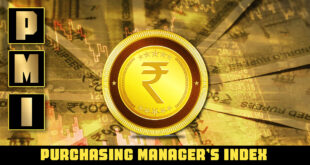- The Ministry of Steel has written to the Finance Ministry asking it to look at the possibility of levying customs duty on Chinese stainless steel shipments coming into India.
- Such a duty will benefit the domestic stainless steel industry which has been badly hit by such imports and is “facing low capacity utilisation”.
- The import of stainless steel from China increased from about 20% to about 60% of overall imports into the country.
Industry hit
- In Budget 2022-23, countervailing duties on imports of certain hot-rolled and cold-rolled stainless steel flat products originating from China were revoked.
- The Steel Ministry in its office memorandum acknowledged the representation from various trade bodies and noted that a surge was observed in the import of stainless steel flat products from China.
- A year before the customs duty on stainless steel imports from China was revoked, that is in 2020-21, stainless steel imports from China were 1,57,000 tonnes, which increased by more than 300% to 6,32,000 tonnes in 2022-23.
- This has adversely impacted the domestic stainless steel industry.
- As per findings of an investigation carried out by DGTR, Chinese imports into India shot up 44% (on an annualised basis) after suspension of CVD since February 2021.
- It stood at 49% (on an annualised basis) for a 9- month period in 2022.
What is Customs Duty?
- Customs Duty refers to the tax that is imposed on the transportation of goods across international borders.
- It is a kind of indirect tax that is levied by the government on the imports and exports of goods. Companies that are into the export-import business need to abide by these regulations and pay the customs duty as required.
- Put differently, the customs duty is a kind of fee that are collected by the customs authorities for the movement of goods and services to and from that country.
- The tax that is levied for the import of products is referred to as import duty, while the tax levied on the goods that are exported to some other country is known as an export duty.
- The primary purpose of customs duty is to raise revenue, safeguard the domestic business, jobs, environment and industries etc. from predatory competitors of other countries. Moreover, it helps reduce fraudulent activities and the circulation of black money.
Factors on the basis of which Customs Duty is calculated
The customs duty is calculated based on various factors such as the following:
- The place of acquisition of the good.
- The place where the goods were made.
- The material of the goods.
- Weight and dimensions of the good etc.
Moreover, if one is bringing a good for the first time in India, she/he must declare it as per the customs rule.
Customs Duty in India
- India has a well-developed taxation structure. The tax system in India is mainly a three-tier system that is based between the Central, State Governments and the local government organizations. Customs duty in India falls under the Customs Act 1962 and Customs Tariff Act of 1975.
- India’s tariff system is based on the Harmonised System of Nomenclature (HSN) of the Customs Co-operation Council.
- It also follows the Directorate-General of Commercial Intelligence and Statistics (DGCI&S) that uses eight-digit codes for statistical purposes, and the Directorate General of Foreign Trade (DGFT) that has broadly extended the eight-digit DGCI&S codes up to 10 digits.
- The sample calculation for identifying import duties on equipment, raw material and other inputs is displayed in the following Figure. The calculation has four variable values, where the rate of tax depends upon the HSN Codes of the products.
Structure of a Customs Duty in India
Usually, the goods that are imported to the country are charged customs duty along with educational cess. The customs duty is evaluated on the value of the transaction of the goods.
The basic structure of import and export tariffs in India includes:
- Basics Customs Duty
- Additional Duty
- Special additional duty
- Education assessment or cess
- Other state level taxes
The additional duty is applied to all imports except for wine, spirits and alcoholic beverages. Furthermore, the special additional duty is calculated on top of the basics duty and additional duty.
Safeguard Duty
This is levied of the customs authorities feel that the exports of a particular good can damage the economy of the country.
Countervailing Duties’
- Duties that are imposed in order to counter the negative impact of import subsidies to protect domestic producers are called countervailing duties.
- In cases foreign producers attempt to subsidize the goods being exported by them so that it causes domestic production to suffer because of a shift in domestic demand towards cheaper imported goods, the government makes mandatory the payment of a countervailing duty on the import of such goods to the domestic economy.
- This raises the price of these goods leading to domestic goods again being equally competitive and attractive.
- Thus, domestic businesses are cushioned. These duties can be imposed under the specifications given by the WTO (World Trade Organization) after the investigation finds that exporters are engaged in dumping. These are also known as anti-dumping duties.
Anti-Dumping Duty
- Anti-dumping duty is a tariff imposed on imports manufactured in foreign countries that are priced below the fair market value of similar goods in the domestic market.
- The government imposes anti-dumping duty on foreign imports when it believes that the goods are being “dumped” – through the low pricing – in the domestic market. Anti-dumping duty is imposed to protect local businesses and markets from unfair competition by foreign imports.
- The duty is priced in an amount that equals the difference between the normal costs of the products in the importing country and the market value of similar goods in the exporting country or other countries that produce similar products.
SOURCE: THE HINDU, PIB
 Chinmaya IAS Academy – Current Affairs Chinmaya IAS Academy – Current Affairs
Chinmaya IAS Academy – Current Affairs Chinmaya IAS Academy – Current Affairs



